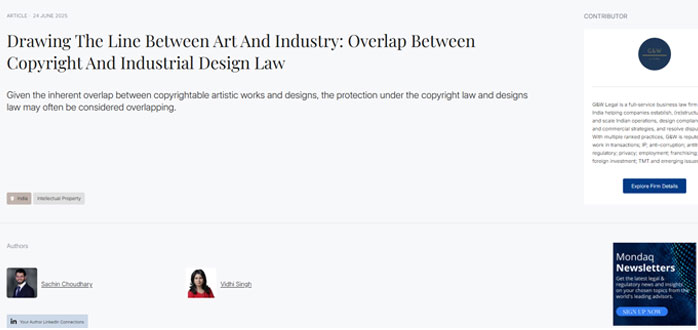
Given the inherent overlap between copyrightable artistic works and designs, the protection under the copyright law and designs law may often be considered overlapping. The Supreme Court of India (‘Court’) recently had the occasion to delve into the discussion of distinguishing ‘copyright’ and ‘design’. In Cryogas Equipment Pvt. Ltd. vs. Inox India Ltd. & Ors.1, the Court formulated an approach to set these two distinct forms of intellectual property rights apart from each other.
Facts of the Case
To briefly summarise the facts, Inox India Ltd. (‘Inox’) filed a suit for infringement of their copyright subsisting in the engineering drawings of liquid natural gas semi-trailers developed by Inox. In response, the Defendants moved their application seeking rejection of the suit on the ground that it was not maintainable under Section 15(2) of the Copyright Act, 1957 (‘Copyright Act’), contending that the proprietary engineering drawings fell within the definition of a ‘design’ under Section 2(d) of the Designs Act, 2000 (‘Designs Act’).
The Issue before the Court
For context, Section 15(2) of the Copyright Act states that any design that is capable of being registered under the Designs Act, if not registered, then the copyright protection in such design would terminate once that design is applied to any article and reproduced in excess of fifty times by an industrial process. To analyse the applicability of Section 15(2) of the Copyright Act in a given case, it is important to correctly classify an article as either a ‘design’ under the Designs Act or an ‘artistic work’ under the Copyright Act.
The Court, therefore, undertook the limited exercise of determining the distinction between a ‘design’ under the Designs Act and an ‘artistic work’ that might warrant copyright protection.















